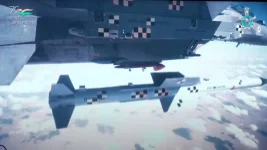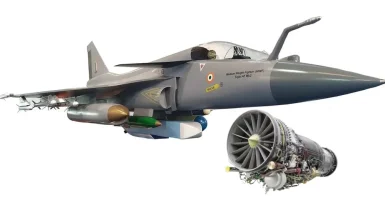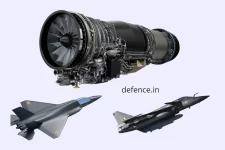- Views: 2K
- Replies: 27

Hindustan Aeronautics Limited (HAL) officials have provided significant updates on the Tejas Mk2 program at Aero India 2025. The indigenous Light Combat Aircraft (LCA) is progressing steadily towards its first prototype rollout, anticipated by the end of this year.
The Tejas Mk2, an advanced version of the Tejas Mk1, is currently in its final assembly stages. Major components, including the center fuselage and wings, have been delivered and integrated into the assembly jig.
HAL officials confirmed that the aircraft is being assembled using a streamlined approach, leveraging the existing supplier network from the Tejas Mk1 program. This strategy ensures a readily available supply of components that meet the required quality standards.
While the prototype rollout remains on schedule, the first flight has been slightly adjusted to April or May 2026, from the initial target of March 2026. This minor delay is attributed to the complexity of integrating the aircraft's advanced systems and subsystems. HAL officials emphasized that the delay will not significantly impact the overall program timeline.
The assembly of the first Tejas Mk2 prototype is a meticulous process, expected to take over ten months to complete. This extended timeline is necessary to ensure the integration of as many operational systems as possible before the first flight, ultimately accelerating the development process.
In a departure from traditional procedures, HAL has opted to bypass the standard Initial Operational Clearance (IOC) and Final Operational Clearance (FOC) certifications for the Tejas Mk2. Instead, the aircraft will be cleared for production after achieving a basic IOC, focusing primarily on the core weapons configuration. This includes Beyond Visual Range Air-to-Air Missiles (BVRAAMs), Close Combat Missiles (CCM), and Precision Guided Munitions (PGM).
This streamlined approach aims to expedite the production and induction of the Tejas Mk2 into the Indian Air Force (IAF). Once the basic IOC is achieved, the IAF will assume responsibility for integrating additional weapons systems and conducting further trials, including in-flight refueling. This collaborative approach between HAL and the IAF is expected to significantly reduce the time required for the Tejas Mk2 to become operational.
The Tejas Mk2 boasts significant technological advancements over its predecessor, incorporating new features and capabilities. These upgrades contribute to the aircraft's enhanced performance but have also played a role in the slight delay in the first flight. Ultimately, these advancements are crucial for ensuring the Tejas Mk2's effectiveness in modern aerial combat scenarios.



